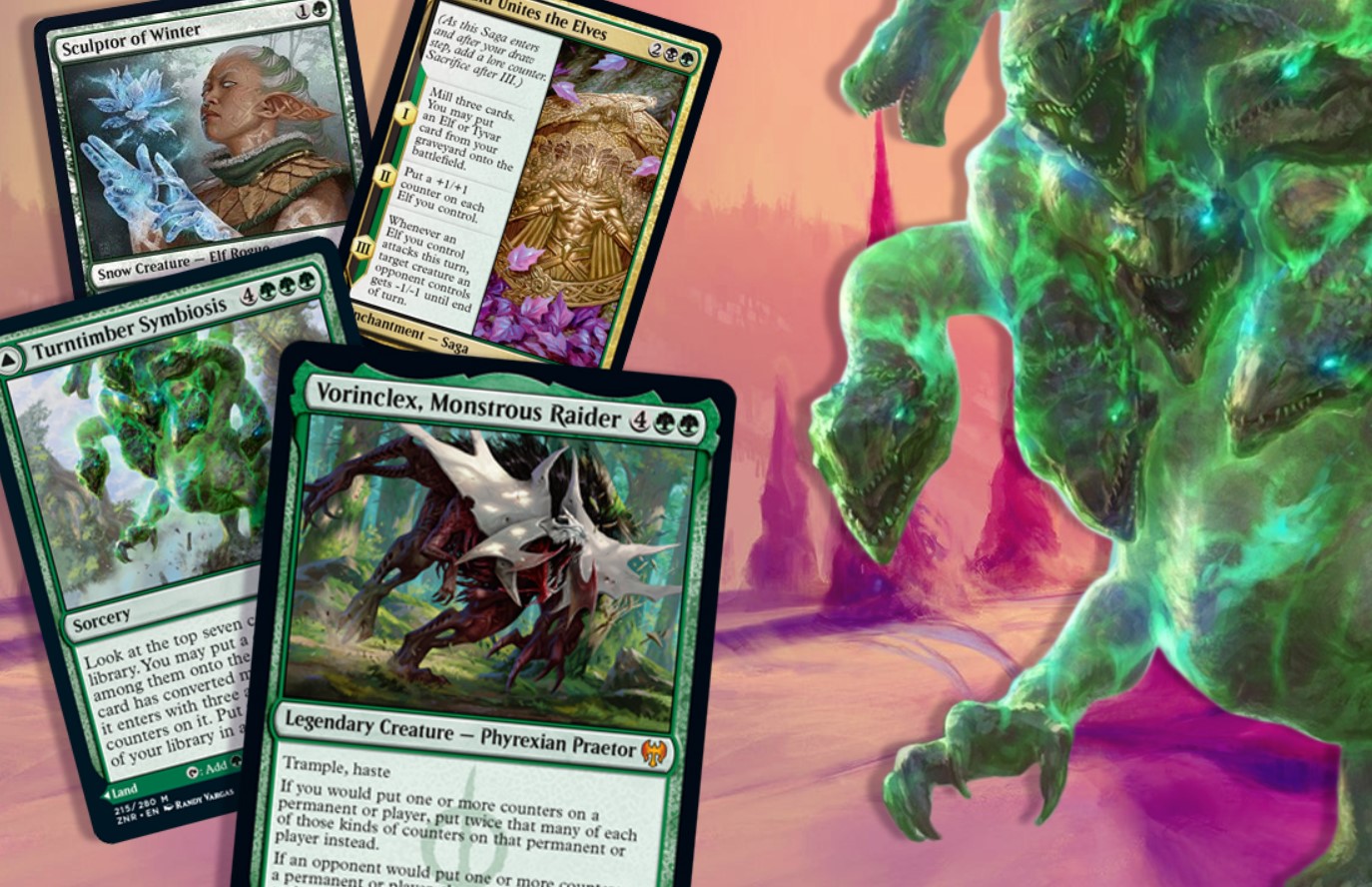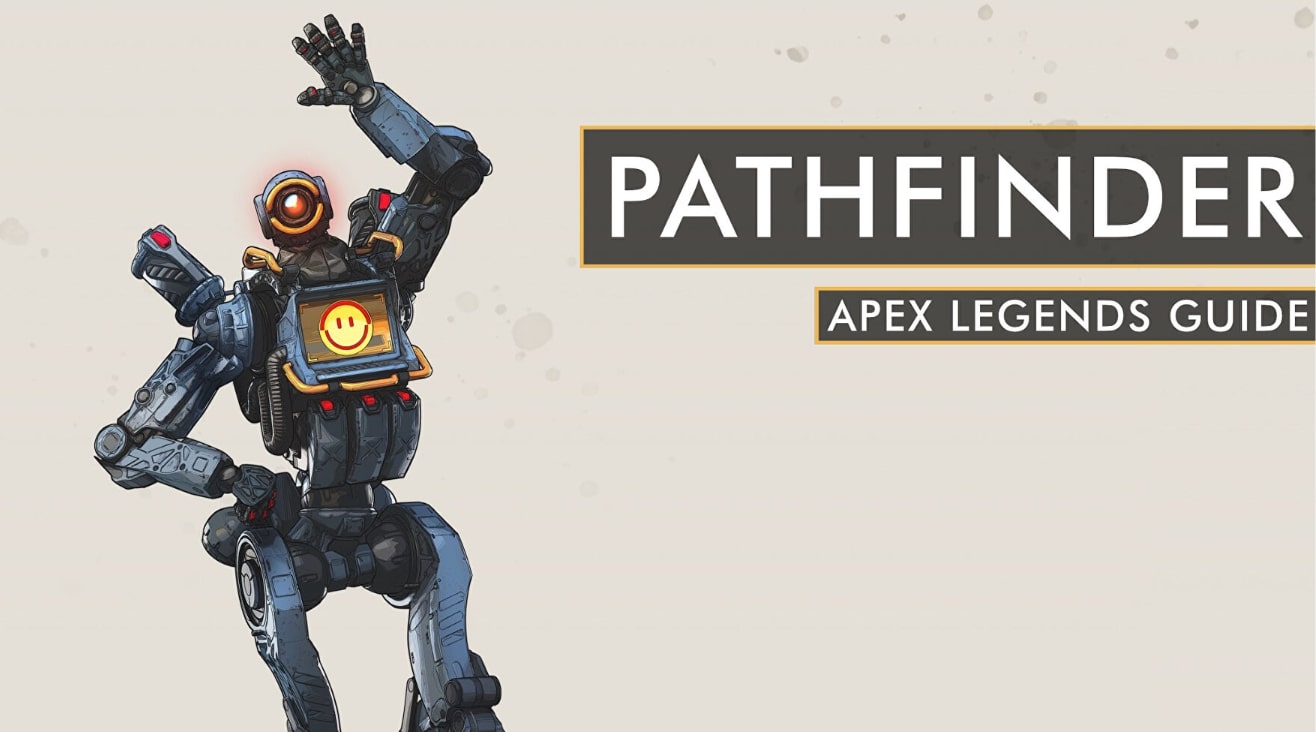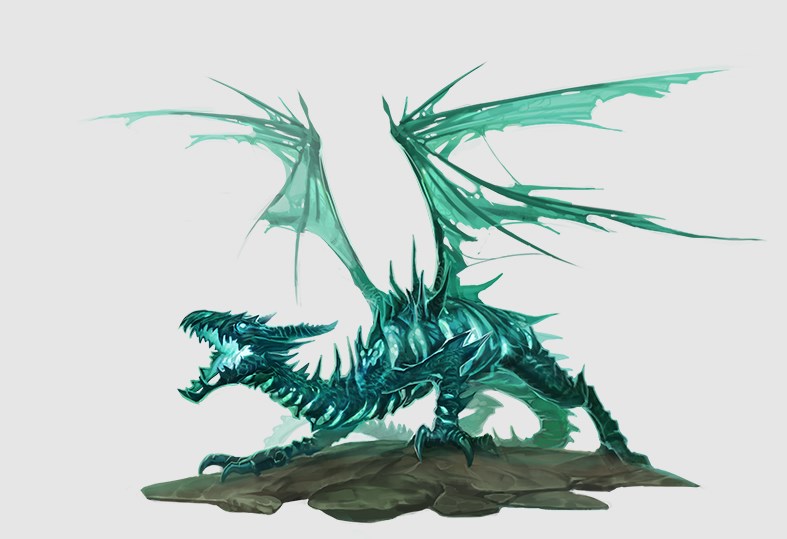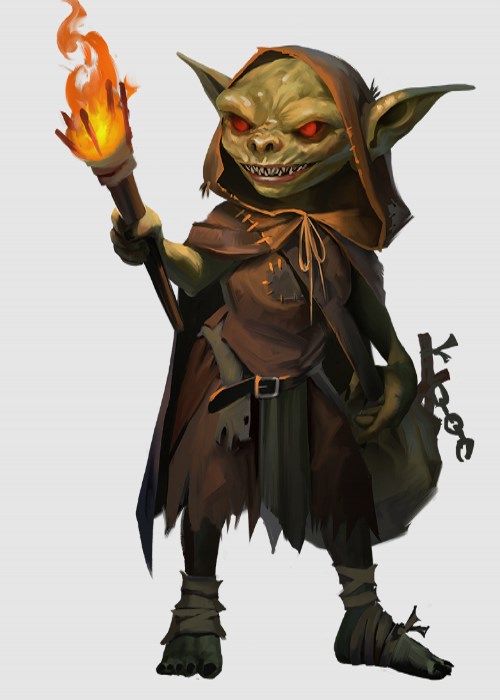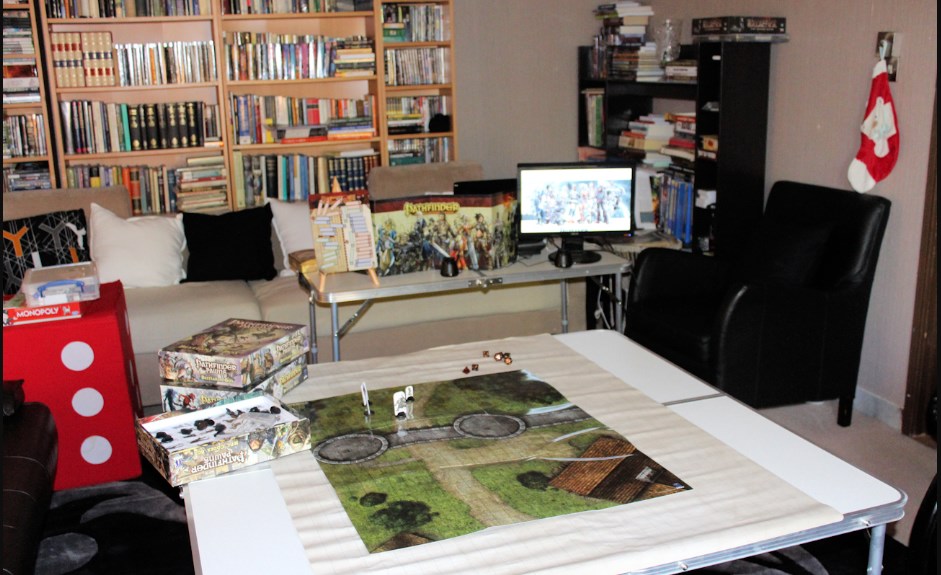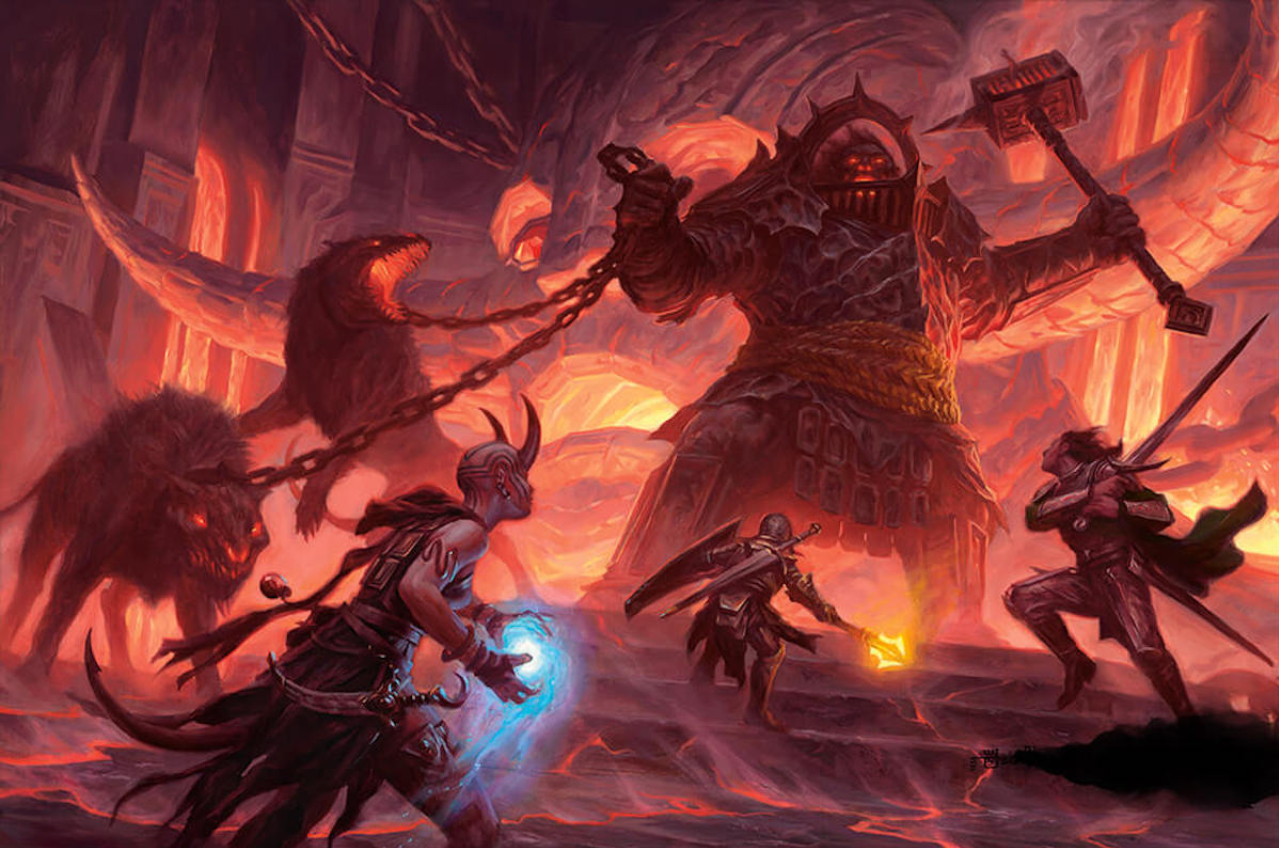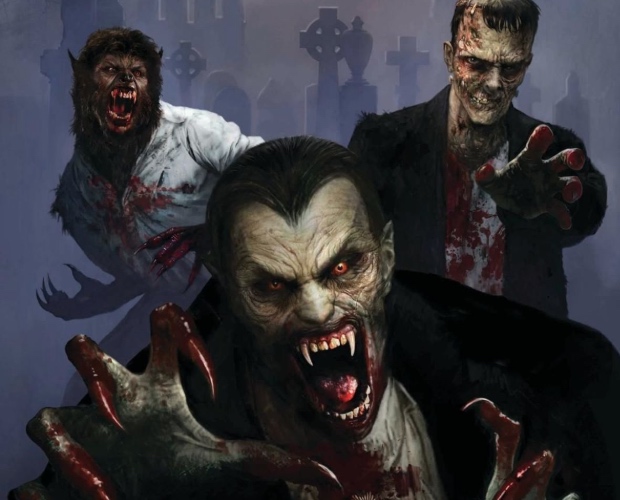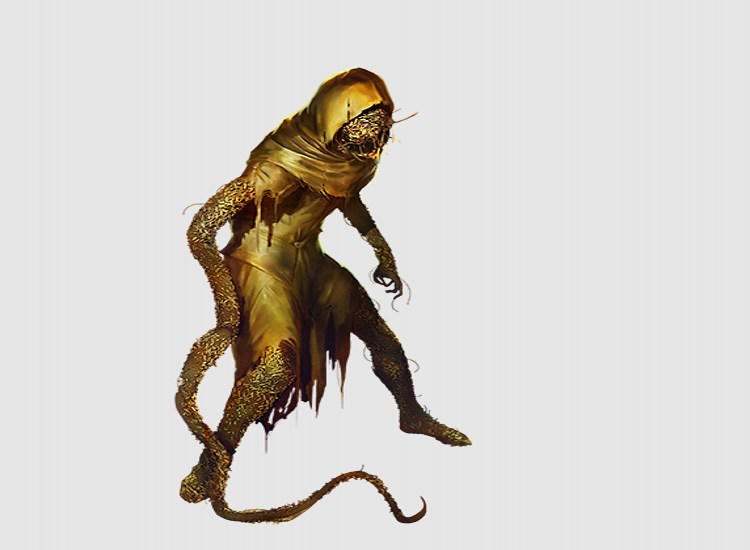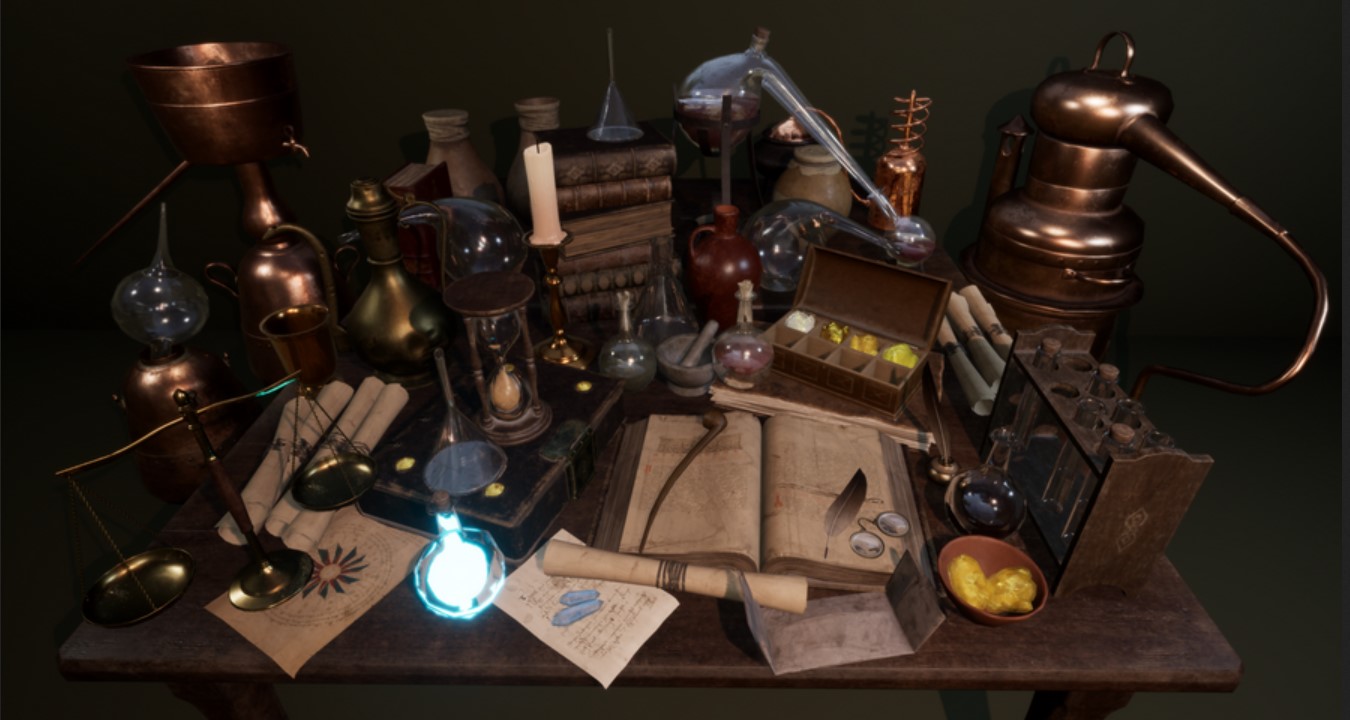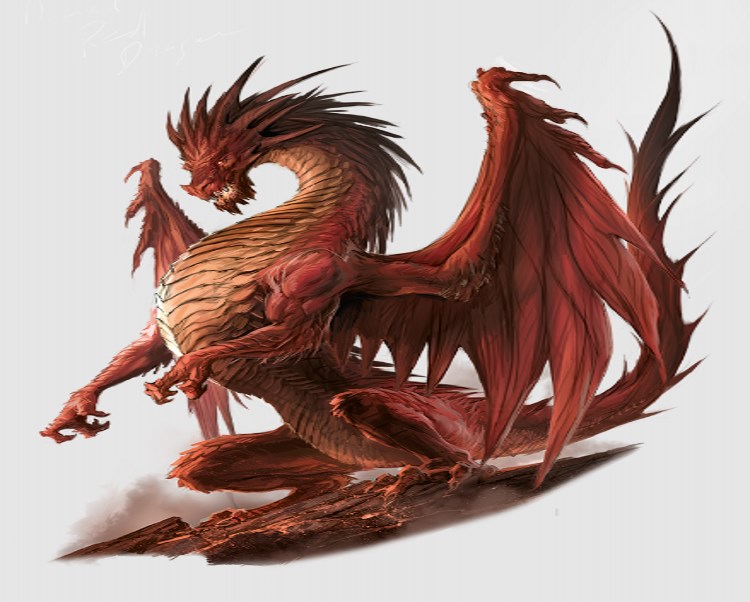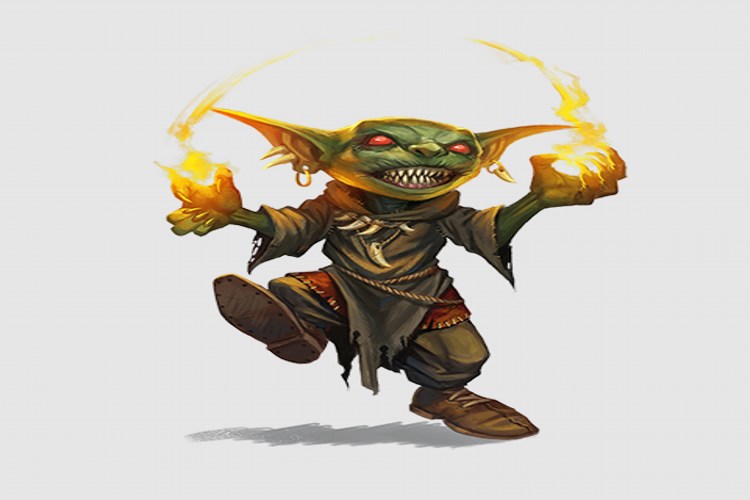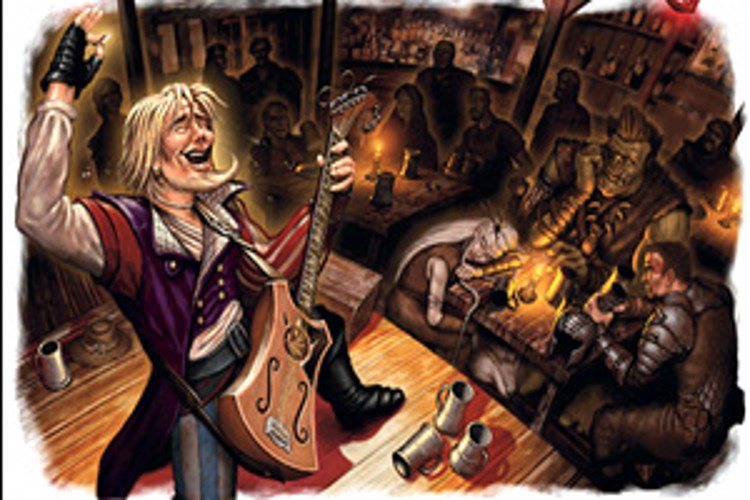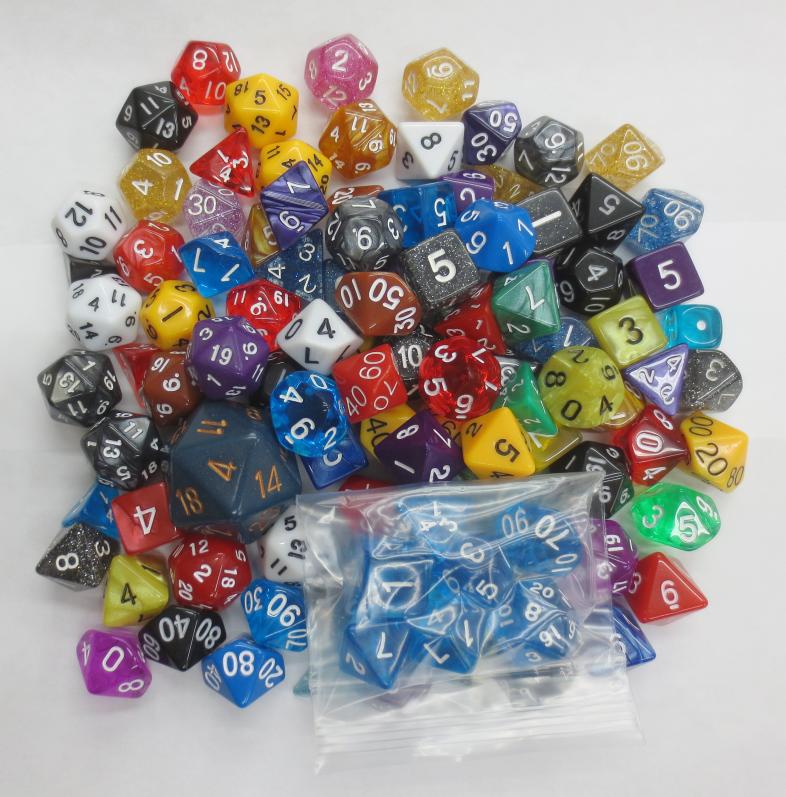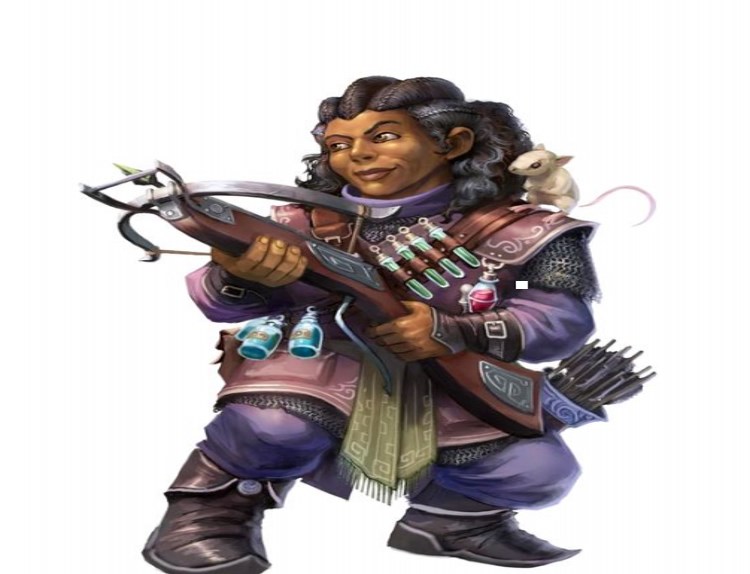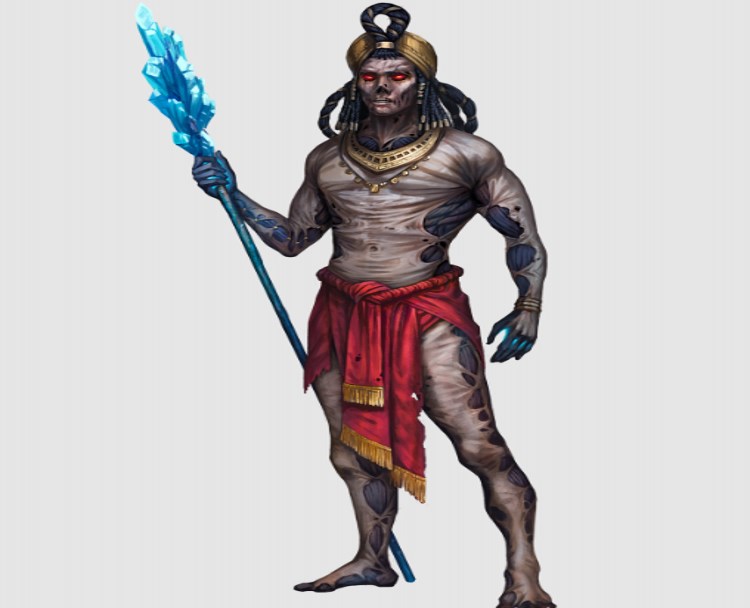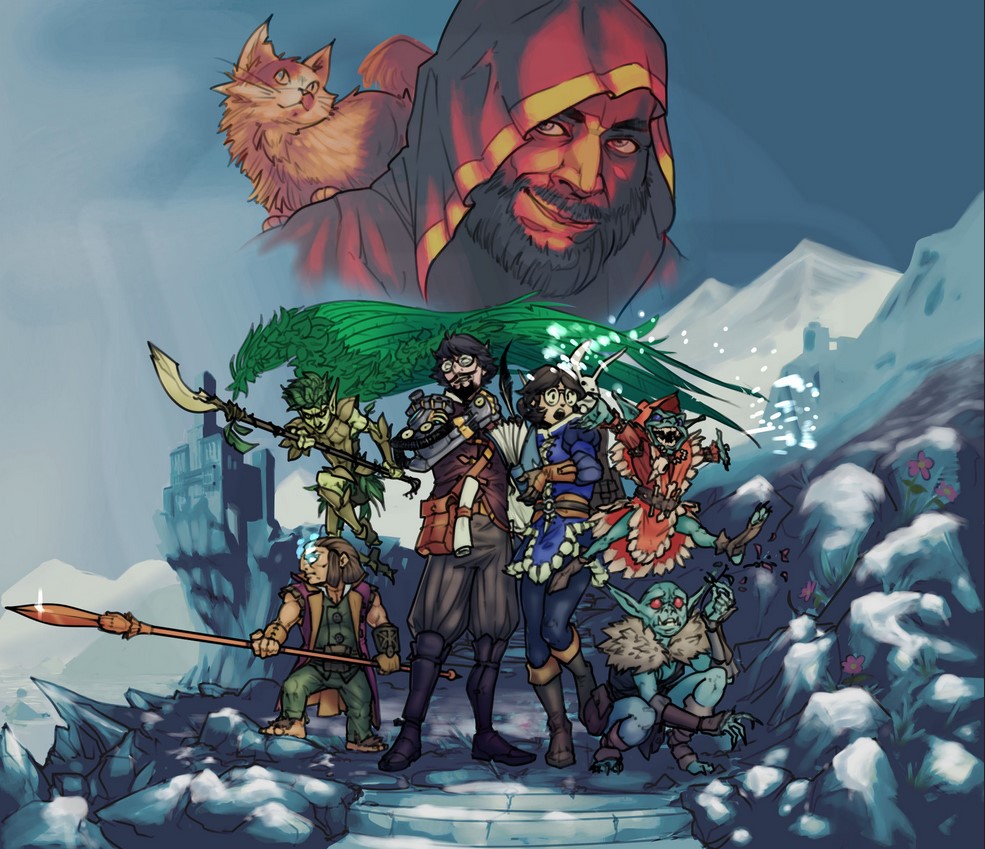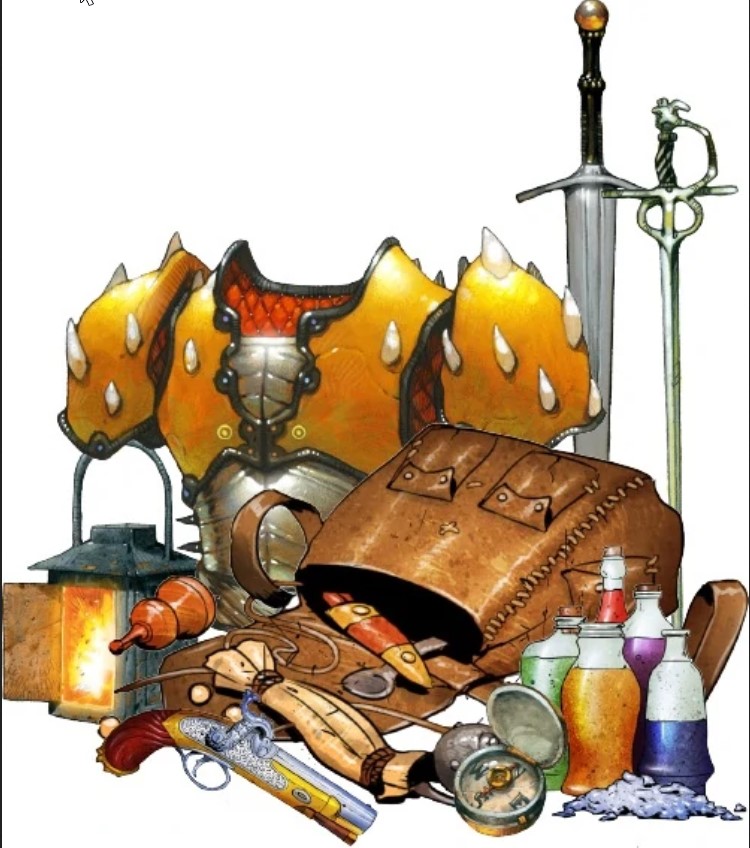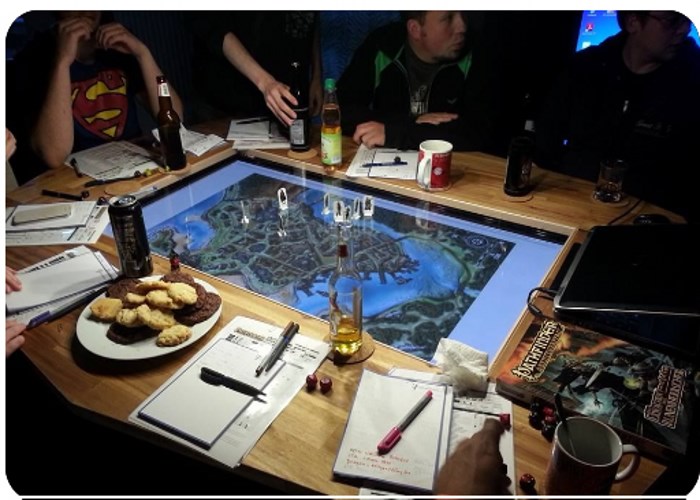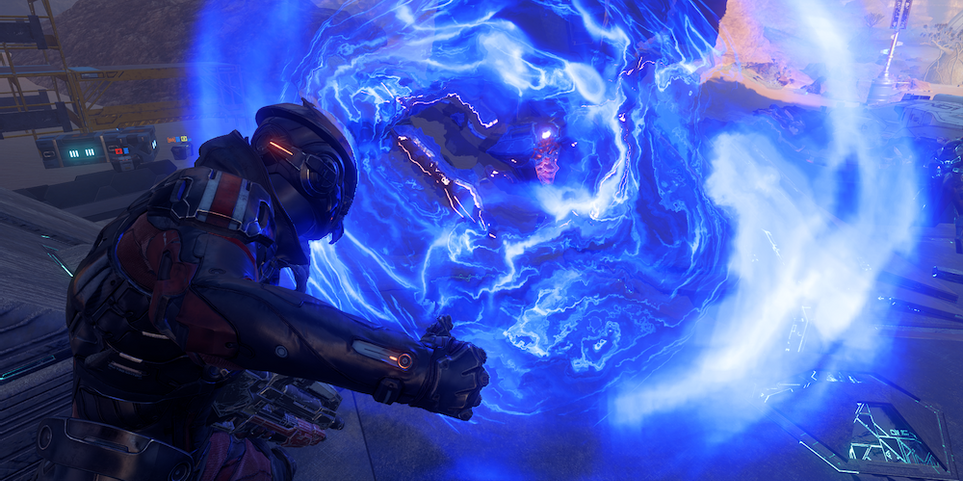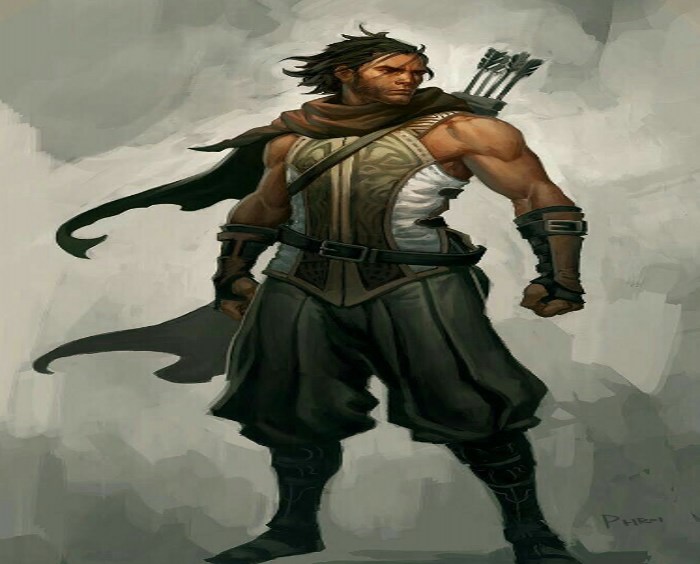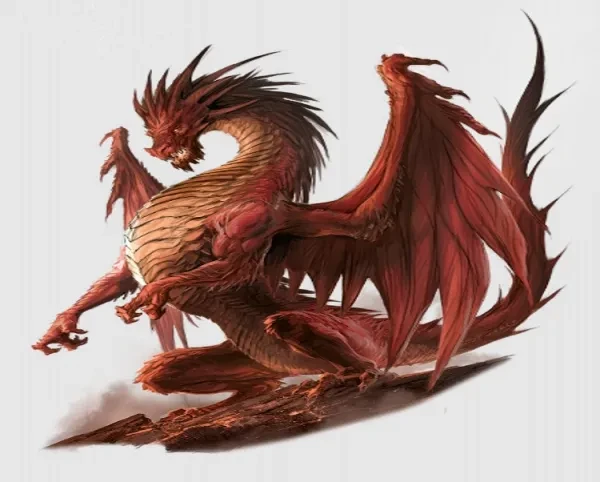
There are a few schools of monster-making in tabletop games when it comes to making fights more interesting. One is to add a lot more of the same monster. While this can be a valid approach if the story calls for it, it gets tedious after you’ve sent twelve of the same mooks for 3 encounters. Jacking up a monster’s HP is another approach but that too makes the fights last longer but not more interesting.
But you don’t have to do that. Pathfinder has a big wide bestiary with plenty of options and modifications to make encounters more interesting instead of drawn-out punching bag sessions.
15. Goblin Pyro
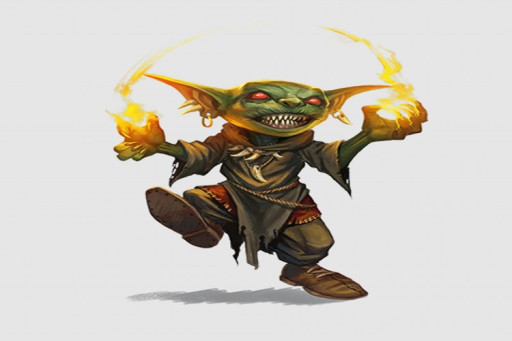
(From Pathfinder Bestiary)
The traditional first encounter for a new Pathfinder party is a horde of goblins, mostly attacking without rhyme, reason, or much regard for their own personal safety because in-universe, Goblins don’t have much of any of those. On a meta-level, a goblin encounter is the tabletop equivalent of World 1-1 of Mario. They exist to give the players a chance to learn how combat works. But that doesn’t mean you can’t add something spicy to it. My suggestion is a Goblin Pyro.
The thing that makes the Goblin Pyro dangerous is the fact that his magic hits multiple targets at once with Burning Hands. Which he can do up to three times. Most early encounters at this level get resolved by a full-frontal assault without much thought as to a party’s formation and target priority. Once the Goblin Pyro casts Burning Hands and hits two or more party members, your group will instinctively shift targets while trying to avoid getting burnt a second time While roughly as easily dispatched as their fellow goblins, a Goblin Pyro will set the tone that low-level encounters will require as much strategy as high-level ones and teach your party things they will need for the bigger threats.
Goblin Pyro Stats:
- Level 1
- Perception +4; darkvision
- Languages Common, Goblin
- Skills Acrobatics +7, Fire Lore +7, Stealth +7
- Str +0, Dex +4, Con +2, Int +0, Wis -1, Cha +3
- Items torch
- AC 17;
- Fort +5, Ref +9, Will +4
- HP 15
- Goblin Scuttle Trigger A goblin ally ends a move action adjacent to the pyro. Effect The goblin pyro Steps.
- Speed 25 feet
- Melee torch +7 [+2/-3] (fire), Damage 1d4 bludgeoning plus 1 fire
- Arcane Spontaneous Spells DC 16, attack +6; 1st burning hands, grease (3 slots); Cantrips (1st) light, mage hand, produce flame, tanglefoot
14. Dretch
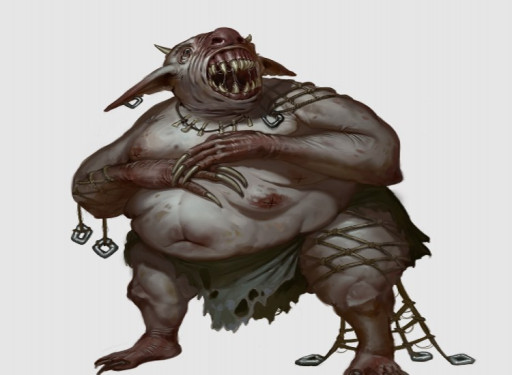
(From Pathfinder Bestiary 3)
I believe a first or second session should end with a boss fight to test all the things the party has learned so far and maybe bring something new to the table. It’s classic game design. There are many low-level monsters you can use for this. One of my personal favorites is a Dretch. It brings a decent amount of power and a couple of really annoying spells to trip up players.
A Dretch is a demon of sloth. He’s limited in the by of actions he can take based on the roll of a d4 each turn. This can limit him but it does justify how strong he can be for a level 2 demon. The fact that he can get an additional d4 of damage. each time it succeeds at a melee attack is just one of the things he can use.
He has Fear and Slow spells. These two status spells can throw a wrinkle into the party’s strategies and keep them on their toes. He can Frenzied Slashes, which allows him to use three attacks without the traditional penalties, but it does make him easier to hit since he’ll be clumsy after. He could also in theory summon another Dretch, but if he fails, he just might be eaten by that demon. A good bit of comedy is possible.
One of the things that’s good about a Dretch is that he’s easy to put in as an end-of-session boss. Fighting a cave full of goblins? One of them accidentally completes a ritual. Looking for a warehouse of thieves? One of them stole and read a book he shouldn’t have and now there’s a dretch. Unruly summoned creatures are easy to use for low-level bosses so keep that in mind for writer’s block.
Dretch stats:
- Level 2
- Perception +6; darkvision
- Languages Abyssal; telepathy 100 feet
- Skills Acrobatics +6, Athletics +7, Deception +6, Stealth +6
- Str +3, Dex +0, Con +4, Int -3, Wis +0, Cha +0
- Sloth At the start of each of the dretch's turns, roll 1d4. The result is the number of actions the dretch regains that turn (maximum 3). Effects like the slowed condition can further reduce their number of actions.
- AC 17;
- Fort +10, Ref +4, Will +8
- HP 45;
- Weaknesses cold iron 3, good 3
- Speed 20 feet
- Melee jaws +9 [+4/-1] (evil, magical), Damage 1d8+3 piercing plus 1d4 evil
- Melee claw +9 [+5/+1] (agile, evil, magical), Damage 1d6+3 slashing plus 1d4 evil
- Divine Innate Spells DC 16; 3rd slow; 1st fear
- Rituals DC 16; 1st abyssal pact
- Cower The dretch makes itself as small as possible, protecting its vital organs with its limbs. It gains a +4 circumstance bonus to AC but takes a –2 penalty to attack rolls. This lasts until the dretch moves from its current space, falls unconscious, or ends the effect as a free action.
- Frenzied Slashes The dretch makes three claw Strikes, each at a –2 penalty, all targeting the same creature. The dretch's multiple-attack penalty doesn't increase until after it has made all three attacks. The dretch gains the clumsy 2 condition until the beginning of its next turn.
- Vicious Criticals A dretch makes the most of any weakness it finds. Whenever a dretch scores a critical hit with its claw Strike, the target takes an additional 1d6 persistent bleed damage.
13. Gelatinous Cube
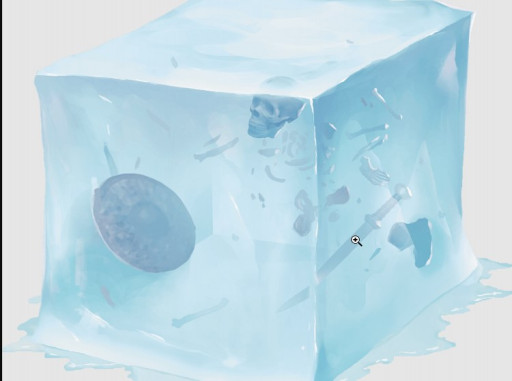
(From Dungeons and Dragons Rulebook)
I have a history with this Jell-O from hell. I was in a Pathfinder Society scenario designed for new players. The GM informed us there was an optional encounter coming up and gave us some signs there was something to investigate. I along with a couple of other players said we wanted to leave it alone. It was optional. But someone said they wanted to investigate it because that’s what his character would do. The ensuing encounter with the Gelatinous Cube was engaging (in that it almost killed us) but it gave me a hatred of the sentence “That’s what my character would do.” What made this cube so dangerous?
For starters, it’s immune to a lot. It has no vital organs so it can’t take critical hits. And it’s immune to sneak attacks rendering the rogue less effective. Offensively, this thing is also a beast. It can engulf anyone it’s larger than and deal damage to anyone engulfed in it. While it doesn’t do much damage on its own but its attacks paralyze.
Paralysis is trouble when you’re dealing with multiple opponents. While in most pre-written scenarios, they appear alone, it is possible to have it with supporting monsters to take advantage of paralyzed party members. These cubes make a party think on their feet and create challenging encounters.
Gelatinous Cube Stats
:
- Level 3
- Perception +5; motion sense 60 feet, no vision
- Skills Athletics +11 (+13 to Shove)
- Str +4, Dex -5, Con +5, Int -5, Wis +0, Cha -5
- Motion Sense A gelatinous cube can sense nearby motion through vibration and air movement.
- Transparent A gelatinous cube is so clear that it’s difficult to spot. A successful DC 23 Perception check is required to notice a stationary cube, and a creature must be Searching to attempt this check. A creature that walks into the cube is automatically Engulfed (this usually causes the GM to call for initiative).
- AC 10;
- Fort +12, Ref +0, Will +5
- HP 90;
- Immunities acid, critical hits, mental, precision, unconscious, visual;
- Resistances electricity 5
- Speed 15 feet
- Melee cube face +11 [+6/+1], Damage 1d6 acid plus paralysis
- Engulf DC 19, 2d6 acid, Escape DC 19, Rupture 7. A creature Engulfed by the gelatinous cube must also attempt a saving throw against paralysis.
- Paralysis (incapacitation) A creature Engulfed by the cube or hit by its attack is paralyzed unless it succeeds at a DC 20 Fortitude save. A victim can attempt a new save to recover at the end of each of its turns.
- Weak Acid A gelatinous cube's acid damages only organic material—not metal, stone, or other inorganic substances.
12. Carrion Golem

(From Pathfinder Bestiary 2)
By level 4, you’re starting to crack open the bestiary a bit more. Your average goblins and ruffians pose no threat unless there are a lot of them. But we’re trying to avoid the old strategies of “throwing lots of monsters at the party.” So let’s bring something stronger to the table: Golems. These hulking monsters have a lot going for them and will force some party members to change their strategies thanks to their resistances and immunities.
Golems, even the weaker Carrion Golem, resist a lot of magic. Status effect magic and abilities are largely immune to most of the things low-level players have access to. A bard that focuses on mind control will have to shift focus to support spells. Your fighters, if they don’t have an adamantine weapon, will have to navigate around a damage resistance.
Offensively, this monster can deal a lot of damage. Most of its real tricks are passive. Its stench can make a character sick. And its attacks can give characters filth fever. The more concerning issue for players is that it hits like a truck even without those things. However, a Carrion Golem takes more damage from fire and it is always fun for players to discover a weakness they can realistically exploit.
As a GM, there are multiple ways to use this golem. He can be on his own and react to orders from people who are long dead. Or he can be a support monster for another antagonist. Either way, the Carrion Golem is a good way to introduce golem mechanics to the party so they aren’t blindsided when they reach the stronger golems.
Carrion Golem stats:
- Level 4
- Perception +6; darkvision
- Skills Athletics +14
- Str +4, Dex -2, Con +3, Int -5, Wis +0, Cha -5
- AC 19; Fort +13, Ref +8, Will +10
- HP 60; Immunities bleed, death effects, disease, doomed, drained, electricity, fatigued, healing, magic (see Golem Antimagic below), mental, necromancy, nonlethal attacks, paralyzed, poison, sickened, unconscious; Resistances physical 5 (except adamantine or slashing)
- Golem Antimagic harmed by fire (4d6, 1d8 from areas or persistent damage); healed by electricity (area 1d6 HP); slowed by cold
- Stench (aura, olfactory) 40 feet. A creature entering the aura or starting its turn in the aura must succeed at a DC 19 Fortitude save or become sickened 1 (plus slowed 1 for as long as it's sickened on a critical failure). While within the aura, affected creatures take a –2 circumstance penalty to saves against disease and to recover from the sickened condition. A creature that succeeds at its save is temporarily immune for 1 minute.
- Vulnerable to Gentle Repose Casting a gentle repose spell on a carrion golem causes it to grow stiff. The golem attempts a DC 19 Fortitude save. It's unaffected on a critical success, slowed 1 for 1d4 rounds on a success, and on a failure is immobilized and slowed for 1d4 rounds.
- Speed 25 feet
- Melee jaws +14 [+9/+4] (magical), Damage 2d10+4 piercing plus filth fever
- Melee claw +14 [+10/+6] (agile, magical), Damage 2d6+4 slashing plus filth fever
- Filth Fever (disease) The sickened and unconscious conditions from filth fever can't end or be reduced until the disease is cured.; Saving Throw DC 19 Fortitude; Stage 1 carrier with no ill effect (1d4 hours); Stage 2 sickened 1 (1 day); Stage 3 sickened 1 and slowed 1 as long as it remains sickened (1 day); Stage 4 unconscious (1 day); Stage 5 dead
11. Caligni Vanguards
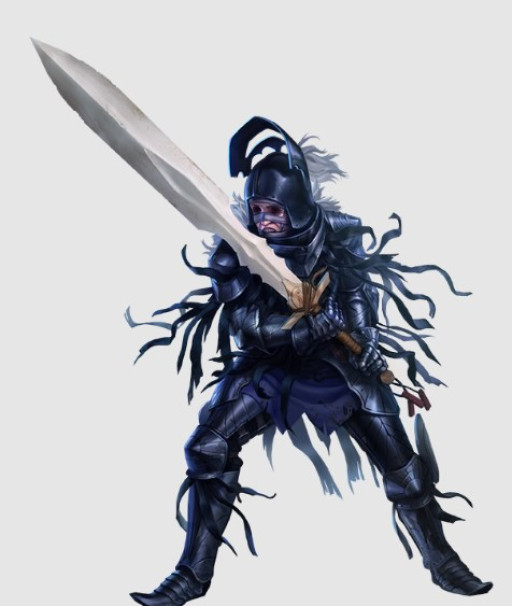
(From Pathfinder Bestiary 3)
For those whose adventures take them underground, they may find themselves encountering the fiercely territorial Caligni. They don’t like surface dwellers, particularly the ones that like to go into their cities and take anything not nailed down. They’re evenly matched with mid-level Pathfinders. Worst of all, they have an interesting quirk upon dying: They explode.
Calignis tend to attack in groups. Many of them have abilities that augment their fellow Caligni. The vanguards can grant other nearby Caligni the ability to use the Attack of Opportunity feat. They also can inflict blindness, albeit for 1 turn. This can become dangerous when fighting them in groups.
They also tend to use more tactics than “Use special attack a lot.” They have longbows they can use to attack enemies from range. The Vanguards are as versatile and cunning as the Pathfinders themselves. And when they are killed they explode and damage everyone in the nearby area. So players have to beware of that.
Caligni Vanguard stats:
- Level 5
- Perception +13; echolocation 60 feet, no vision
- Languages Caligni, Undercommon
- Skills Athletics +14, Stealth +8
- Str +5, Dex -1, Con +3, Int +1, Wis +4, Cha +1
- Echolocation A caligni vanguard can use their hearing as a precise sense at the listed range.
- Items composite longbow (40 arrows), full plate (see death blaze), greatsword
- AC 24; Fort +14, Ref +8, Will +11
- HP 50; Immunities visual; Resistances slashing 5; Weaknesses sonic 5
- Attack of Opportunity
- Death Blaze When the vanguard dies, their body combusts in a blaze of fire and armor shrapnel. All creatures within a 10-foot emanation take 3d6 fire damage and 3d6 piercing damage (DC 19 basic Reflex save). The vanguard's armor is destroyed in the blaze, but their other gear is unaffected and left in a pile where they died.
- Speed 25 feet
- Melee greatsword +16 [+11/+6] (versatile P), Damage 1d12+8 slashing
- Ranged composite longbow +10 [+5/+0] (deadly d10, range increment 100 feet, volley), Damage 1d8+5 piercing
- Call to Arms (auditory, mental) Each caligni within 30 feet of the vanguard gains the Attack of Opportunity reaction until the end of the vanguard's next turn. Once a caligni has used this Attack of Opportunity, that caligni is temporarily immune to the same vanguard's Call to Arms for 10 minutes.
- Shadowed Blade (darkness) The vanguard makes a melee Strike, channeling shadowy essence into their weapon or unarmed attack to envelop the target. If the Strike hits, the target must succeed at a DC 19 Fortitude save or become blinded until the end of its next turn.
10. Pairaka
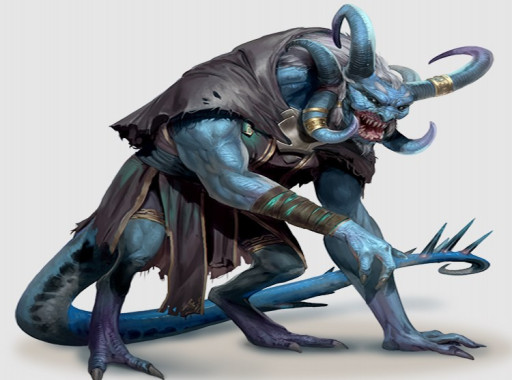
(From Pathfinder Bestiary 3)
Pairaka are ex-genies. Deciding that granting wishes to foolish mortals was not their calling in life, they rebelled, but in the process fell under the sway of a new master, Ahirman. Being reshaped by him gave the Pairaka all sorts of new powers. The most dangerous one is the ability to control others.
Pairaka have pretty dangerous magic. They can use Dimension Door at will. Meaning they can either flee a battle to group up with enemies, or they can go behind the party’s lines and directly attack the casters. To make matters worse, their attacks can cause diseases. For those who don’t have high-fortitude saves, this can pose a problem.
The bigger problem is his ability to use Charm Person at will. While a Charm Person spell can’t compel fighters to attack their allies, it can still take fighters out of the fight. Fighting more than one Pairaka will pose a challenge for the party.
- Level 7
- Perception +15; greater darkvision
- Languages Common, Daemonic; telepathy 100 feet
- Skills Acrobatics +14, Arcana +13, Deception +20, Diplomacy +20, Intimidation +16, Religion +13, Society +13, Stealth +16
- Str +3, Dex +5, Con +3, Int +2, Wis +4, Cha +7
- AC 24; Fort +12, Ref +16, Will +17; +1 status to all saves vs. magic
- HP 105; Immunities disease; Weaknesses cold iron 5, good 5
- Hatred of Red Pairakas hate the color red. They won't wear the color or willingly enter any place painted red. Given a choice, they'll attack a creature wearing red first. If barred from expressing their displeasure toward the color by force or some magical effect, they take 2d6 mental damage at the end of their turn.
- Speed 25 feet, fly 35 feet
- Melee claw +16 [+12/+8] (agile, evil, finesse, magical), Damage 2d8+6 slashing plus 1d6 evil and bubonic plague
- Divine Innate Spells DC 25; 4th charm (at will), dimension door (at will), misdirection (at will; self only), outcast's curse (at will), suggestion (at will); Cantrips (4th) detect magic
- Rituals DC 25; 1st div pact
- Bubonic Plague (disease) A creature can't remove the fatigued condition while infected; Saving Throw DC 23 Fortitude; Onset 1 day; Stage 1 fatigued (1 day); Stage 2 enfeebled 2 and fatigued (1 day); Stage 3 enfeebled 3, fatigued, and take 1d6 persistent bleed damage every 1d20 minutes (1 day)
- Change Shape (divine, polymorph, transmutation, concentrate) The pairaka can take the appearance of any Small or Medium humanoid or animal. This doesn't change their Speed or their attack and damage modifiers with the Strikes, but it might change the damage type their strikes deal.
- Tormenting Dreams (divine, emotion, enchantment, mental) Frequency once per day; Effect The pairaka torments a sleeping creature within 100 feet with visions of betrayals by loved ones and friends. The target must attempt a DC 25 Will save, with the effects of the nightmare spell.
9. Rust Monster
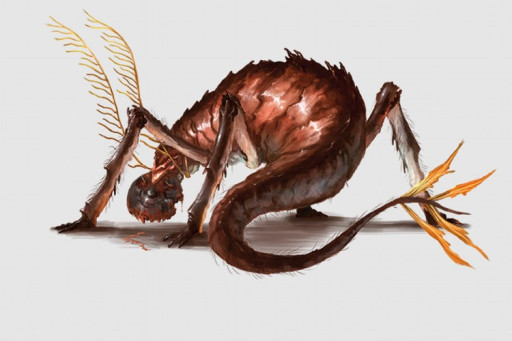
(From Pathfinder Bestiary 2)
Much like how Pathfinder parties need to have a variety of roles, so too must a GM design monster fights with things like support monsters. While fighting big monsters is fun, it’s important to have encounters with support monsters rather than have every encounter be with something big. A good support monster to bring at low levels would be the rust monster. While he doesn’t do a lot of damage to the players, he does a lot of damage to their things.
Players depend on their weapons and armor. A Rust monster can take away a player’s metal weapons and damage them. Low-level weapons and armor are usually the first to go in extended encounters with these creatures. This can make it easy for any other monsters in the encounter to attack them.
Plus, it can attack creatures leaving its adjacent squares with its tail. It’s an attack of opportunity in all but name. It’s a good way to teach your players the importance of having ranged attack options
Rust Monster Stats:
- Level 3
- Perception +8; darkvision, metal scent 30 feet
- Skills Athletics +7 (+13 to Disarm a metal item)
- Str +0, Dex +3, Con +1, Int -4, Wis +1, Cha +0
- Metal Scent A rust monster can smell metal as a precise sense.
- AC 19; Fort +8, Ref +10, Will +6
- HP 40
- Tail Trip Trigger A creature carrying a metal item attempts to move out of a square within reach of the rust monster's tail. Effect The rust monster makes a tail Strike against the triggering creature.
- Speed 35 feet, climb 10 feet
- Melee antenna +10 [+5/+0] (finesse), Effect rust
- Melee mandibles +8 [+3/-2] (finesse), Damage 1d10+4 piercing
- Melee tail +8 [+3/-2] (finesse), Damage 1d4+2 bludgeoning plus Improved Knockdown
- Antenna Disarm The rust monster attempts to Disarm a metal item a creature is holding using its antenna (with the same modifier as an antenna Strike). On a success, the item is subject to the rust monster’s rust ability (see below) in addition to the effects of the Disarm, and if the check to Disarm is a critical success, the rust monster drops the item on the ground in its own space.
- Rust A rust monster’s antenna causes metal to rapidly rust and corrode. If it succeeds at an antenna Strike or Disarm attempt with its antenna, the rust monster deals 2d6 damage (doubled on a critical hit) to a metal item the target is wearing or holding, ignoring its Hardness. If the rust monster hits an unattended metal item, the item takes this damage automatically. If a creature uses the Shield Block reaction with a metal shield against an antenna attack, the shield is automatically broken, but no other item is rusted on that attack.
8. Binumir
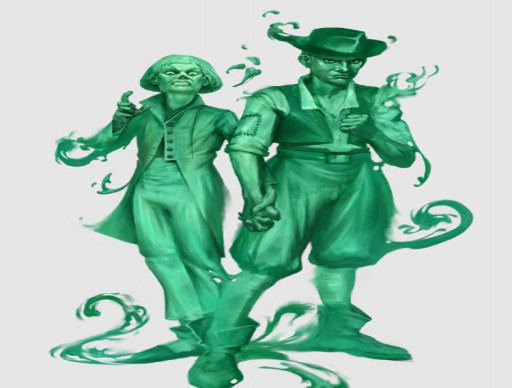
From Pathfinder Devil at the Dreaming Palace
There is a saying that says two heads are better than one. This depends on your perspective. If you’re a party facing two intangible spirits, and those spirits are trying to kill you, you’re probably in the camp of “this is not better.”
Binumirs are two or sometimes even more spirits that loved or had strong camaraderie with each other who died in a major disaster of some sort. The real emotional gut punch is that each half of the spirit longs for the other half, not knowing that they’re standing by the person they’re looking for. It has the defensive abilities of an incorporeal creature. And it can use its Agonizing Wail to make the party unable to react. It’s a pretty good support creature.
However, that’s not the thing that makes Binumirs dangerous. A GM can give these things class levels as Greater Binumirs. Meaning a party can stand against incorporeal Fighters, Monks, or mages.
Binumir Stats:
- Level 3
- Perception +10; darkvision
- Languages Common
- Skills Society +10
- Str -4, Dex +4, Con +3, Int +0, Wis +1, Cha +0
- AC 19; Fort +9, Ref +12, Will +8
- HP 25 (negative healing); Immunities death effects, disease, paralyzed, poison, precision, unconscious; Resistances all damage 2 (except force, ghost touch, or positive; double resistance vs. non-magical)
- Delay Condition The binumir's dual spirit takes longer to be affected by detrimental effects. When the binumir is the target of an effect that imparts the confused, controlled, fascinated, frightened, sickened, slowed, or stunned condition, the condition is automatically suppressed until the end of the binumir's next turn.
- Speed fly 25 feet
- Melee ghostly hand +12 [+8/+4] (agile, finesse, magical), Damage 1d8+4 negative
- Agonizing Wail (auditory, concentrate) The binumir unleashes a distressing cry that fills others with wrenching sadness. Creatures within 30 feet must attempt a DC 17 Will save.
- Critical Success The target is unaffected and is temporarily immune to Agonizing Wail for 1 minute.
- Success The target can't use reactions for 1 round.
- Failure The target is slowed 1 and can't use reactions for 1 minute as it sobs uncontrollably. It can attempt a new Will save to end the effect at the end of each of its turns.
- Critical Failure As failure, but the target can't make saves to end the effect.
- Dual Assault The binumir makes four Strikes; no more than two can be against the same target. These attacks count toward the binumir's multiple attack penalty, but the penalty doesn't increase until after all the attacks have been made.
7. Intellect Devourer
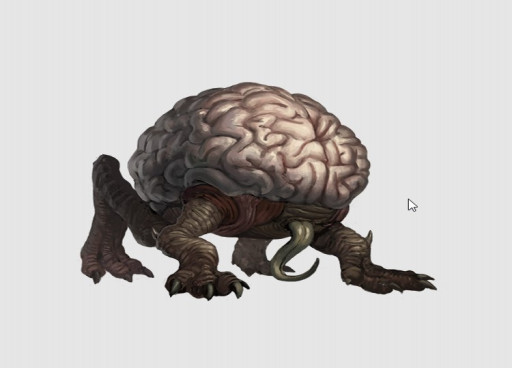
(From Pathfinder Bestiary 2)
A good GM likes to put in a good twist. A classic one is the old kindly NPC who is helping you or asking you for help is not kindly or helpful. There are many ways to execute this twist, But one good one is the Intellect Devourer.
At their core, Intellect Devourers are body snatchers. They infiltrate the corpses of people they kill and access, their knowledge, and even some of their abilities. While they can’t use the spells of people they possess, they have their formidable arsenal of control spells. Their Confusion spell can be devastating since it has a wide area of effect.
The fact that almost anyone can be the victim of an Intellect Devourer makes them especially dangerous. You could be fighting anyone from a peasant to a king. If you want to make things interesting, you could give the corpse some special abilities. To defeat the Intellect Devourer, the party must defeat the corpse. And there is the chance that the Devourer can kill and seize the corpse of a party member. This can be easier than you think. It can kill an unconscious person and take over their corpse.
Intellect Devourer stats:
- Level 8
- Perception +16; darkvision, lifesense 60 feet
- Languages Aklo, Common, Undercommon; can't speak any languages; telepathy 100 feet
- Skills Athletics +14, Deception +20, Diplomacy +16, Occultism +17, Society +17, Stealth +18
- Str +2, Dex +4, Con +4, Int +5, Wis +4, Cha +6
- AC 26; Fort +14, Ref +16, Will +18
- HP 130; Immunities blinded, controlled, emotion, possession
- Speed 35 feet
- Melee talon +18 [+14/+10] (agile, finesse), Damage 2d10+5 slashing
- Occult Innate Spells DC 27; 4th confusion, globe of invulnerability; 3rd soothe (×3); 2nd gentle repose, invisibility (at will; self only), paranoia (at will); Cantrips (4th) daze, detect magic, read aura
- Body Thief (manipulate, necromancy, occult, possession) The intellect devourer reduces in size and burrows into the brain of a creature dead for no longer than 1 day. At the start of the intellect devourer's next turn, the body revives at its maximum Hit Points, controlled by the devourer. The intellect devourer is conscious and can sense everything the possessed body could. Any effect that ends the possession kills the host body with the same effects as Exit Body. The intellect devourer can't use any of the host creature's spells with Body Thief but can use its own spells. The host body slowly decays while inhabited by the intellect devourer, becoming uninhabitable after 7 days unless preserved with gentle repose or a similar effect.
- Exit Body (move) Requirements The intellect devourer is controlling a body with Body Thief; Effect The intellect devourer leaves its host body, which dies instantly and is no longer a suitable host for any Body Thief ability. The intellect devourer appears at full size in an adjacent space.
- Ravage The intellect devourer makes two talon Strikes against a paralyzed, restrained, or unconscious creature, using the same attack modifier as its highest attack modifier. These Strikes gain the death trait. If Ravage kills the target, the intellect devourer may use Body Thief against it as a free action.
- Stolen Identity While an intellect devourer uses Body Thief, it gains the ability to understand and speak all languages known by the host, as well as knowledge of the host body's abilities, identity, role in society, and personality. However, it does not gain the specific memories or knowledge of the host body.
6. Cythnigot
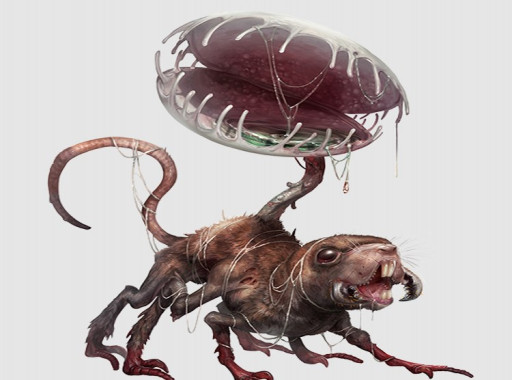
(From Pathfinder Bestiary 2)
If you’re leaning more toward a Lovecraftian story, you’ll still need a few low-level monsters to get your party up to a level where they can fight the good stuff. A good but still dangerous monster is the Cythnigot. They’re low-level but they have some nightmarish abilities including spreading spores.
Cythnigot spores invade the body and erupt into twitching spikes. The spores slow down their victims and make them clumsy, making them easier to hit. This, along with the damage it deals, makes it an ideal monster for any challenge, Put them in groups or as support for other monsters.
Its very appearance is also sickening. Anyone within 10 feet can gain the sickened condition. This inflicts several penalties including the inability to drink potions. This can be dangerous since the party will be trying to use potions to conserve spells. This horror may be low-level but it can be horrifying nonetheless.
Cythnigot stats:
- Level 1
- Perception +5; darkvision
- Languages Abyssal; telepathy (touch only)
- Skills Acrobatics +6, Occultism +7, Stealth +6
- Str +1, Dex +3, Con +4, Int +2, Wis +2, Cha +1
- AC 16; Fort +9, Ref +6, Will +5
- HP 14; Immunities controlled, fear; Resistances mental 3, physical 3 (except cold iron); Weaknesses lawful 3
- Speed 30 feet, fly 40 feet
- Melee bite +8 [+4/+0] (agile, chaotic, finesse, magical), Damage 1d10+1 piercing plus 1d4 chaotic and tangle spores
- Occult Innate Spells DC 17; 4th read omens; 2nd detect alignment (at will; lawful only), paranoia; 1st phantom pain; Cantrips (1st) daze, detect magic
- Sickening Display (concentrate, emotion, enchantment, fear, mental, occult, visual) The cythnigot presents its awful appearance fully, and creatures in a 10-foot emanation must attempt a DC 17 Will save. Once a creature attempts this save, it's temporarily immune to further Sickening Displays for 1 minute.
- Critical Success The creature is unaffected.
- Success The creature is flat-footed until its next turn.
- Failure The creature is sickened 1 and is flat-footed for as long as it's sickened.
- Critical Failure The creature is sickened 2 and is flat-footed for as long as it's sickened.
- Tangle Spores (disease) A creature bitten by a cythnigot becomes afflicted by fast-growing spores that swiftly grow into twitching spikes and hideous pallid growths of hairlike fibers. These growths erupt from the bite wound and writhe and wrap around the creature's limbs. Plant creatures take a –2 circumstance penalty to save against tangle spores; Saving Throw DC 17 Fortitude; Maximum Duration 6 rounds; Stage 1 clumsy 1 (1 round); Stage 2 clumsy 1 and flat-footed (1 round); Stage 3 clumsy 2, flat-footed, and if you attempt a manipulate action, you must succeed at a DC 5 flat check or it's lost; roll the check after spending the action, but before any effects are applied (1 round).
5. Lacedon
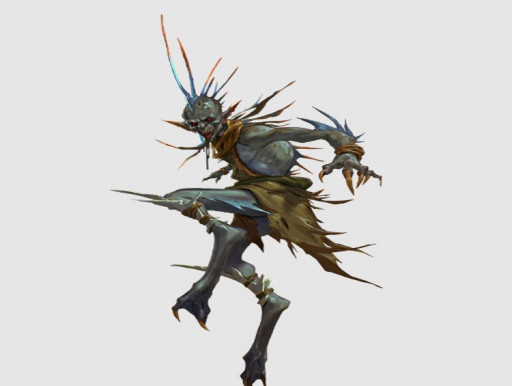
From Pathfinder Book of the Dead
For adventures on the high seas, there are a lot of monsters to choose from. Initially, you might send some low-level pirates or maybe some agitated sea creatures at the party. But there are nastier threats than pirates at low levels. The Lacedon are a group of undead ghouls. They travel in packs. And they want flesh.
The Lacedon have a habit of ravaging coastal towns, looking for flesh to eat. They can also ambush a party’s ship. For being level 2, they can do some decent damage. They can also inflict Ghoul Fever, which if not cured or resisted within 6 in-game days, will turn infected into a ghoul.
The big threat on the battlefield is a ghoul's ability to paralyze. Since they can paralyze easily and travel in packs, they can become a major threat. Since the ghouls are intelligent, they will move in to attack paralyzed victims. A Lacedon group won’t be easy to overcome. But if your party can, they should get a reward
Lacedon stats:
- Level 2
- Perception +7; corpse scent (imprecise), darkvision
- Languages Aquan, Common, Necril
- Skills Acrobatics +8, Athletics +9 (+11 to Swim), Stealth +8, Survival +7
- Str +3, Dex +4, Con +3, Int +1, Wis +1, Cha +3
- Corpse Scent The lacedon can smell humanoid corpses in the water from up to 1 mile away.
- AC 18; Fort +7, Ref +10, Will +7
- HP 32 (negative healing); Immunities death effects, disease, paralyzed, poison, unconscious
- Speed 25 feet, swim 30 feet
- Melee jaws +10 [+5/+0] (finesse), Damage 1d6+5 piercing plus ghoul fever
- Melee claw +10 [+6/+2] (agile, finesse), Damage 1d4+5 slashing
- Aquatic Ambush 45 feet
- Consume Flesh (manipulate) Requirements The lacedon is adjacent to the corpse of a creature that died within the last hour; Effect The lacedon devours a chunk of the corpse and regains 2d6 Hit Points. It can regain Hit Points from any given corpse only once.
- Ghoul Fever (disease) Saving Throw DC 16 Fortitude; Stage 1 carrier with no ill effect (1 day); Stage 2 2d6 negative damage and regains half as many Hit Points from all healing (1 day); Stage 3 as stage 2 (1 day); Stage 4 2d6 negative damage and gains no benefit from healing (1 day); Stage 5 as stage 4 (1 day); Stage 6 dead and rises as a ghoul the next midnight
- Paralyzing Spew (incapacitation, occult, necromancy) The lacedon discharges a spray of carrion vomit at a creature within 20 feet, dealing 1d6 poison damage with a DC 17 basic Fortitude save. A non-elf creature that fails its save is also paralyzed. It can attempt a new save to end the paralysis at the end of each of its turns, and the DC cumulatively decreases by 1 on each such save. The lacedon can't use Paralyzing Spew again for 1d4 rounds.
4. Black Pudding
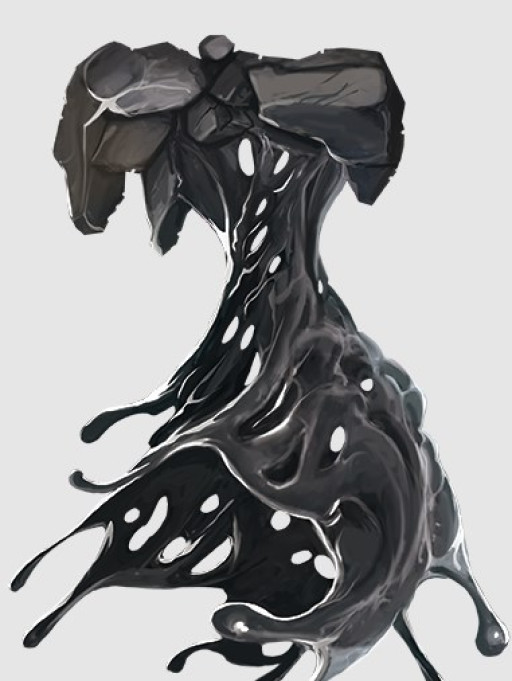
From Pathfinder Bestiary
Oozes are challenging monsters because they’re immune to so many things. But what can you do to make things more challenging? Combine a few traits from a Gelatinous Cube and add some abilities from a Rust Monster. Add a few worse tricks and you get a Black Pudding. Which is inexplicably more disgusting than it sounds.
These oozes have many of the same abilities as the Gelatinous Cubes. However, they can also corrode weapons and armor. They are also more inclined to grapple foes where they can continue to destroy weapons and armor.
What makes the Puddings worse is that they can divide each time they’re hit hard enough with slashing and piercing weapons. Each divided Pudding carries half the HP. But they still have their dangerous abilities. This can make for a frantic and perilous encounter, especially in close quarters.
Black Pudding Stats
- Level 7
- Perception +9; motion sense 60 feet, no vision
- Skills Athletics +18
- Str +7, Dex -5, Con +7, Int -5, Wis +0, Cha -5
- Motion Sense A black pudding can sense nearby motion through vibration and air movement.
- AC 14; Fort +18, Ref +6, Will +11
- HP 165; Immunities acid, critical hits, mental, piercing, precision, slashing, unconscious, visual
- Corrosive Mass A creature that hits the pudding with a metal or wooden weapon must succeed at a DC 22 Reflex save or the weapon takes 2d6 acid damage (after dealing damage to the black pudding as normal). Thrown weapons and ammunition take this damage automatically with no save.
- Split When the black pudding is hit by an attack that would deal slashing or piercing damage and has 10 or more HP, it splits into two identical puddings, each with half the original’s HP. One pudding is in the same space as the original, and the other appears in an adjacent unoccupied space. If no adjacent space is unoccupied, it automatically pushes creatures and objects out of the way to fill a space (the GM decides if an object or creature is too big or sturdy to push).
- Speed 20 feet, climb 20 feet; suction
- Melee pseudopod +18 [+13/+8] (reach 10 feet), Damage 2d8+7 bludgeoning plus 2d6 acid, corrosive touch, and Grab
- Constrict 1d8+7 bludgeoning plus 1d6 acid, DC 26
- Corrosive Touch When the pudding hits a creature with its pseudopod, any acid damage is dealt to the creature's armor or clothing as well as the creature.
- Suction The pudding can climb on ceilings and other inverted surfaces, though such surfaces are difficult terrain for it.
3. Werewolf

(From Pathfinder Bestiary)
Werewolves and other werecreatures come in two varieties. True werecreatures who are born with it, and the afflicted who are cursed. They can fight hard and spread the curse.
Werewolves can use many of the same weapons other humans can. They may even carry some of their human abilities in a fight. If they’re fighting in a group, they can do more damage, They can spread their curse by biting. They can change their shapes when there’s a full moon.
One of the things that can be interesting is how they can be anyone. A GM can use a werewolf to blindside players. Many players come to care about NPCs who are helpful or give them missions. It can become a good mystery plot for a low-level adventure.
Werewolf stats
- Level 3
- Perception +9; low-light vision, scent (imprecise) 30 feet
- Languages Common; wolf empathy
- Skills Acrobatics +7, Athletics +9, Survival +10
- Str +4, Dex +2, Con +2, Int -1, Wis +2, Cha +1
- Wolf Empathy (divination, primal) The werewolf can communicate with lupines.
- Items battle axe, composite shortbow (20 arrows), studded leather armor
- AC 19; Fort +11, Ref +9, Will +7
- HP 63; Weaknesses silver 5
- Attack of Opportunity
- Speed 25 feet
- Melee battle axe +11 [+6/+1] (sweep), Damage 1d8+8 slashing
- Melee claw +11 [+7/+3] (agile), Damage 1d6+8 slashing
- Melee jaws +11 [+6/+1], Damage 1d8+8 piercing plus curse of the werewolf
- Ranged composite shortbow +9 [+4/-1] (deadly 1d10, range increment 60 feet, reload 0), Damage 1d6+4 piercing
- Change Shape (concentrate, polymorph, primal, transmutation) Human with fist +11 for 1d4+8 bludgeoning, or wolf with Speed 40 feet and jaws with Knockdown.
- Curse of the Werewolf (curse, necromancy, primal) This curse affects only humanoids. Saving Throw DC 19 Fortitude save. On each full moon, the cursed creature must succeed at another Fortitude save or turn into a werewolf until dawn. The creature is under the GM’s control and goes on a rampage for half the night before falling unconscious until dawn.
- Moon Frenzy (polymorph, primal, transmutation) When a full moon appears in the night sky, the werewolf must enter hybrid form, can’t Change Shape thereafter, becomes one size larger, increases its reach by 5 feet, and increases the damage of its jaws by 2. When the moon sets or the sun rises, the werewolf returns to humanoid form and is fatigued for 2d4 hours.
- Pack Attack The werewolf’s Strikes deal 1d6 extra damage to creatures within reach of at least two of the werewolf’s allies.
2. Yellow Musk Creeper
(From Pathfinder Bestiary 2)
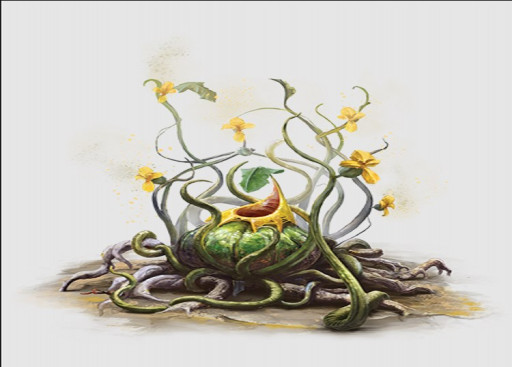
Some creatures survive by being big and having a lot of abilities. Others survive by traveling in packs. Some more terrifying creatures survive by taking over creatures. A big one of these is a Yellow Musk Creeper.
The Yellow Musk Creeper can use its pollen to attract nearby creatures. When they get close, the Yellow Musk Creeper bores its tendrils in its victim’s brains and turns them into thralls. Plus, the fights with the Creepers can take a long time.
A Creeper battle often has a lot of thralls. These thralls spread the pollen that can draw victims to the creature. Since the pollen requires a will save, this can be dangerous for fighters. Creepers are often used for woodland adventures.
Yellow Musk Creeper stats:
- Level 3
- Perception +0; low-light vision
- Skills Athletics +5
- Str +3, Dex -2, Con +2, Int -5, Wis +0, Cha -2
- Slow A yellow musk thrall is permanently slowed 1 and can't use reactions.
- AC 14; Fort +6, Ref +0, Will +2
- HP 12; Immunities mental; Weaknesses fire 5
- Entangling Tendrils (aura) 5 feet. Grasping tendrils extend out from the thrall. When the thrall ends its movement next to a creature, or a creature ends its turn next to the thrall, that creature must succeed at a DC 14 Reflex save or be grabbed by the tendrils.
- Speed 25 feet
- Melee fist +7 [+2/-3], Damage 1d4+3 bludgeoning plus Grab and pollen touch
- Limb Extension Trigger The yellow musk thrall is reduced to 4 HP or fewer; Effect Creeper tendrils tear through the thrall's limbs, causing its forearms to tear loose. The thrall's melee reach increases by 5 feet.
- Pollen Touch When the thrall strikes a creature, that creature is exposed to yellow musk creeper pollen, as Spray Pollen (DC 14). The creature is fascinated by the yellow musk creeper that spawned the thrall, not by the thrall itself.
1. Cursed King
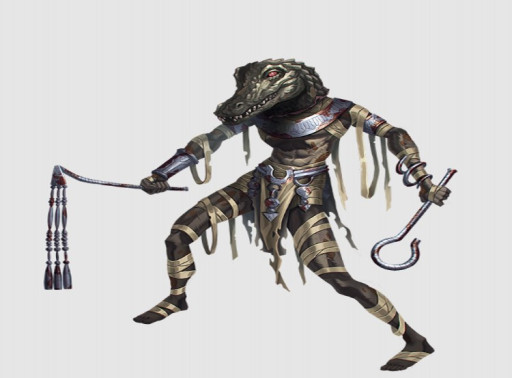
(From Pathfinder Impossible Lands)
As far as midlevel monsters go, Cursed Kings are pretty interesting. These mummies tried to betray their rulers but failed and got turned into mummies for their trouble. Cursed to forever guard tombs, these mummies have terrifying abilities.
They can use their False Authority ability to scare people into running away or stand there paralyzed with fear. The will save for this is high. And false authority is an aura effect. Anyone who gets near a Cursed King is subject to the Will Save. And since kings, cursed or not, need servants, this can become a problem.
The worst thing is that a Cursed King can spread the curse. Anyone that kills a Cursed King will receive a Usurper’s Curse. If not cured in 5 days, the afflicted will become a mindless animal.
Cursed King Stats:
- Level 10
- Perception +20; darkvision
- Languages Necril; plus any two ancient languages (can't speak)
- Skills Athletics +23, Intimidation +17, Stealth +17
- Str +7, Dex +3, Con +4, Int -4, Wis +4, Cha +3
- AC 29; Fort +20, Ref +20, Will +16
- HP 210 (negative healing); Immunities death effects, disease, paralyzed, poison, unconscious; Weaknesses fire 10
- False Authority (aura, emotion, fear, mental) 30 feet. When a creature enters or ends its turn within the cursed king's aura, it must attempt a DC 26 Will save. If it fails, it becomes frightened 2. If it critically fails, it's cowed into submission; in addition to becoming frightened 2, it must use its first action on its turn to kneel or flee from the cursed king. A creature who succeeds at its saving throw becomes immune to the king's false authority for 24 hours.
- Usurper's Curse (curse) When a creature slays a cursed king, it must attempt a DC 29 Will save. On a failure, it suffers the effects of the usurper's curse.
- Deadly Pursuit Trigger A creature within the cursed king's reach attempts to move away; Effect The cursed king Strides up to its Speed, keeping the creature within reach until the creature stops or the cursed king has moved its full Speed. If the creature is still within reach, the cursed king makes a jaws Strike against it.
- Speed 25 feet
- Melee jaws +23 [+18/+13], Damage 2d12+13 piercing plus Grab
- Melee fist +23 [+19/+15] (agile), Damage 2d8+13 bludgeoning
- Berserk At the beginning of each of its turns in combat, a cursed king must attempt a DC 2 flat check. If it succeeds, the DC increases by 1. If it fails, it immediately goes berserk, becoming mindless for the rest of its turn, immune to all mental effects, and attacking the nearest creature it can reach. While it's berserk, each of its unarmed attacks gain the deadly d8 trait. At the end of a turn it failed this flat check or whenever the combat encounter ends, the DC resets to 2.
- Usurper's Curse (curse, necromancy, polymorph) DC 30 Will saving throw. On a failure, the creature who killed the cursed king becomes stupefied 1. On a critical failure, it becomes stupefied 2. As long as that creature remains cursed, it can't remove or decrease the value of the stupefied condition in any way. Afflicted creatures must attempt the saving throw again every 24 hours, increasing the stupefied condition by 1 on a failure or 2 on a critical failure. If the condition ever increases past stupefied 4, they transform, body and mind, into the same animal as the cursed king's head, similar to the critical failure effect of baleful polymorph.
You may also be interested in:
Pathfinder: 15 Boss Monsters For Adventurers To Defeat
Pathfinder: 15 Dungeon Monsters That Make Campaigns More Interesting
Pathfinder: How To Be a Good Game Master

